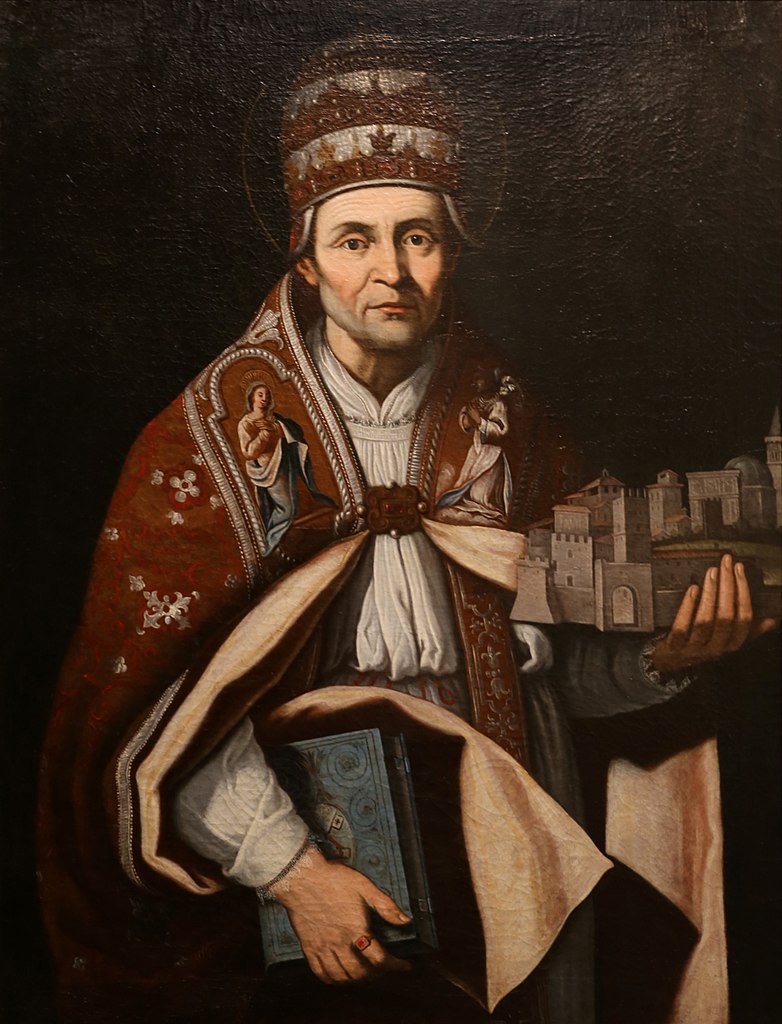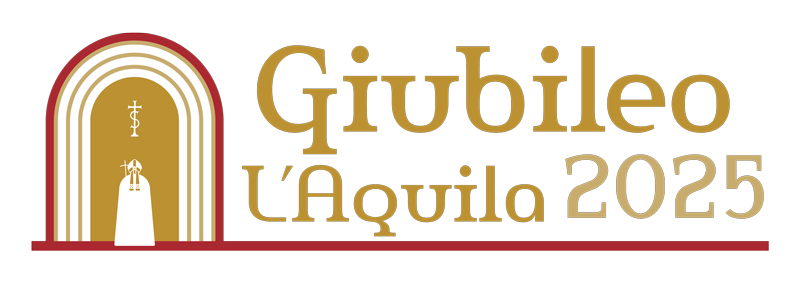St. Peter Celestine (Pietro Angelerio) was born in Isernia, Molise, around 1209, into a very humble family: his parents, Angelerio and Maria, were both farmers and very religious.
From an early age he expressed to his mother his desire to be “a good servant of God” and as a young man, just over twenty years old, he felt a very strong vocation for monastic life.
In 1230 the young Peter entered the monastery of Santa Maria di Faifoli (Campobasso) where he remained for two years, cultivating his studies, attending the novitiate and wearing the religious habit.
Driven by the desire for greater evangelical radicality and spiritual perfection, with the consent of the Abbot, Brother Peter therefore retired to the life of a hermit, beginning a long series of wandering solitudes that would constitute the characteristic of his entire existence.
After his stay in Castel di Sangro (L’Aquila) he settled on a mountain near Sulmona where he spent harsh winters doing penance of all kinds, living in a cell he himself dug into the rock.
Around 1233-1234, Peter went to Rome where he received priestly ordination, before returning between 1235 and 1240 to his beloved hermit life, still in Abruzzo, on Mount Morrone.
His strong devotion to St. John the Baptist led him to choose this Saint as a model to imitate.
As the fame of his sanctity and the gift of miracles attributed to his intercession grew, his hermitages, increasingly inaccessible, became the destination of crowds longing for salvation and peace.
Peter was therefore forced to find a new home near Sulmona, on Mount Maiella, to live out his relationship with God in solitude: the hermitage of Santo Spirito, at 1130 m above sea level, where he founded a hermit community with many young people who asked to be able to share his same spiritual journey.
Always sought after by the people, he founded numerous monastic communities and, in 1263, Pope Nicholas IV recognized the congregation of the “Brothers of the Holy Spirit”, incorporating it into the Benedictine order.
The existence of the institute was, however, called into question shortly afterwards by the canons of the Council of Lyon in 1274, aimed at limiting the multiplication of religious orders.
Peter then went to Lyon and obtained from Gregory X the confirmation of the Institute which at that time, in addition to Santo Spirito, had 15 churches in 5 different dioceses.

Returning from Lyon to L’Aquila, Peter felt, in a dream, the strong call of the Virgin Mary who invited him to build a sanctuary dedicated to her in the vicinity of the city which, founded in 1254 by will of King Conrad IV, was still under construction.
In 1287, the process for the erection of a Marian sanctuary and a Celestinian monastery began in L’Aquila in the locality of Colle di Maggio (Collemaggio).
On 25 August 1288 the grandiose Basilica, not yet completed, was consecrated, and, still in the year 1288, Peter renounced the general priory and retired to his last and most famous hermitage, that of Sant’Onofrio.
Here he was elected to the supreme pontificate on 5 July 1294.
The election ended a long period of vacancy that had lasted more than two years since the death of Pope Nicholas IV.
The cardinals gathered in conclave in Perugia had chosen the hermit of Morrone after he, at the request of King Charles II of Anjou, wrote a letter in which he invited them to hurry to give the Church the supreme pastor.
The letter made a deep impression on the cardinals, especially on the Cardinal Dean Latino Malabranca.
The latter addressed the assembly in an address in which he revealed a dream that brought about unanimous consensus towards the holy old hermit: Pietro da Morrone, who was now 85 years old.
When Peter was notified of his election, he was filled with great fear and trembling. He asked for time, prayed for a long time, then made the decision, convinced that in this way he was doing God’s will.
He decided to travel on the back of a donkey, to follow the example of the Lord, and arrived in L’Aquila in the Basilica of Collemaggio, where, on 29 August 1294, Matteo Rosso Orsini, Cardinal Protodeacon, placed the papal tiara and pallium on his head, in the presence of important exponents of worldly power and an immense crowd.
From that time, Pietro da Morrone was venerated as Celestine V, becoming the 192nd Pope of the Catholic Church.
During his very short but intense pontificate he granted the Perdonanza, an important historical-religious celebration that still exists today in the capital of Abruzzo.

